Mash and
fatty liver
To SPEAK LIVER, you first need to learn the language of liver disease. What is MASH (metabolic dysfunction–associated steatohepatitis), and why is it so important to find it early?

About MASH and fatty liver disease
Fatty liver, a condition in which there is excessive fat buildup in the liver, can progress to MASH—a more severe form of fatty liver disease. Over time, MASH can cause damage to the liver and may lead to life-threatening consequences:
- Cardiovascular complications such as heart attack, heart failure, or stroke
- Liver cancer
- Cirrhosis that can lead to liver failure or the need for a liver transplant
- Shortened life span
MASH is often diagnosed late or not at all, making it important to know the risk factors and symptoms of MASH so that you can ask your health care professional (HCP) about getting screened. With timely screening, detection, and management, it may be possible to stop or even reverse liver damage from MASH.
MASH is a metabolic disease
Because MASH is caused by metabolic dysfunction, HCPs call it a metabolic disease. You may also hear MASH is associated with cardiometabolic risk factors because it also affects your cardiovascular system, which is made up of your heart and blood vessels. Because the organs in your body are interconnected and rely on each other, MASH may be associated with other metabolic diseases.
Fatty liver or family history of cirrhosis, type 2 diabetes or prediabetes, obesity, high blood pressure, high triglycerides (a type of fat), low HDL (good cholesterol), persistently elevated liver enzymes (over 6 months), or PCOS (polycystic ovary syndrome) are conditions associated with a greater risk of MASH.
If you are living with any of these health conditions, ask your HCP whether you should be screened for MASH.
How does fatty liver disease progress to MASH?
While fatty liver disease doesn’t always progress, it can potentially reach any of these stages in adults:
Healthy liver
A healthy liver will have a small amount of fat and has many functions in the body.
It's important to know that lifestyle changes can help during all stages of fatty liver disease.
Fatty liver
The fat content in the liver is greater than 5%. When identified early, certain lifestyle changes (including losing weight) can help reverse this buildup of excess fat.
MASH without scarring
When too much fat builds up in the liver, it can trigger inflammation. This may cause liver cells to become damaged.
MASH with
scarring
Damaged liver cells may cause scarring. The buildup of scar tissue is known as fibrosis.
Cirrhosis
Cirrhosis occurs when liver scarring becomes severe and prevents the liver from working normally.
While it may take years to reach advanced stages of MASH, some people may progress faster than others.
Ways a healthy liver functions
The liver is big—both in size and responsibility. Not only is it the largest solid human organ, but it also performs more than 500 different functions to support your overall health, including:
Removing harmful substances from the blood
Regulating cholesterol
Maintaining blood sugar
Breaking down food into energy
Producing up to 90% of proteins found in the blood
Storing vitamins and minerals
A healthy liver can produce new cells to replace lost or damaged tissue, making it an organ with the unique ability to heal itself.
Your liver is closely connected to the health of another important organ, your heart. If you’re already working with an HCP to improve certain heart diseases, it may be time to bring your liver into the conversation by asking if you could be at risk for MASH.
By addressing MASH in its early stages, you may help stop or even reverse liver damage. Talk to your doctor about whether you should be screened for MASH if you think you may be at risk.
How do you know if you have MASH?
MASH can sometimes be hard to detect, so it's important to talk to your doctor about screening for MASH.
The information provided is for educational purposes only.






